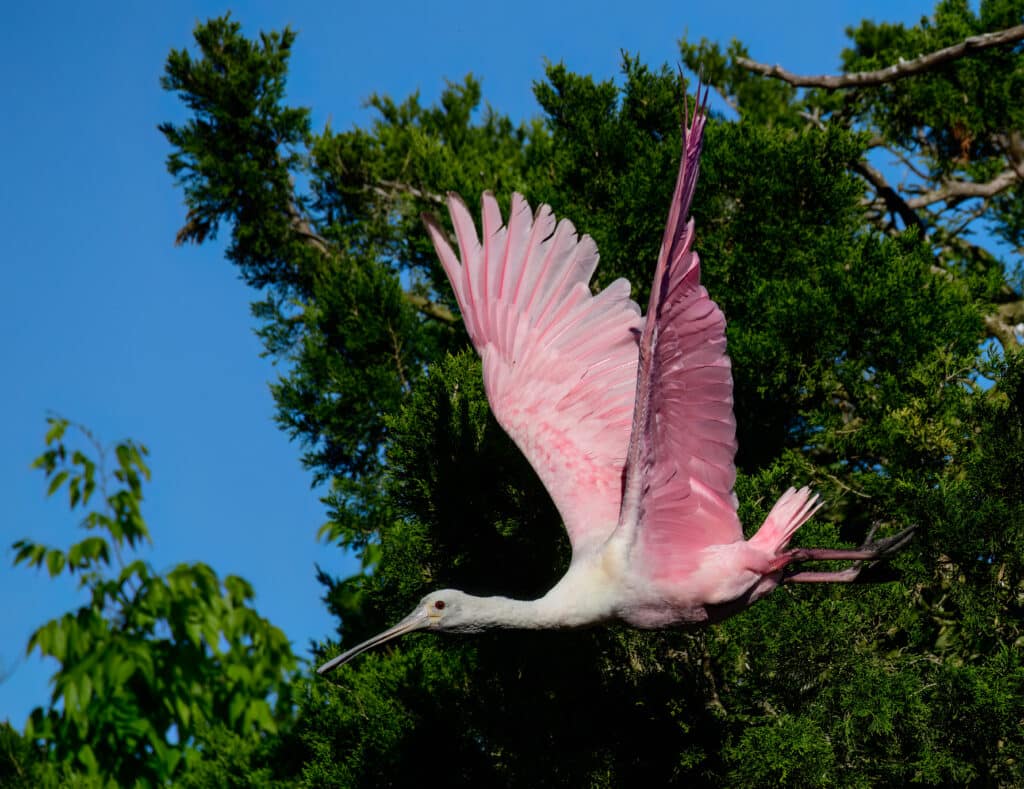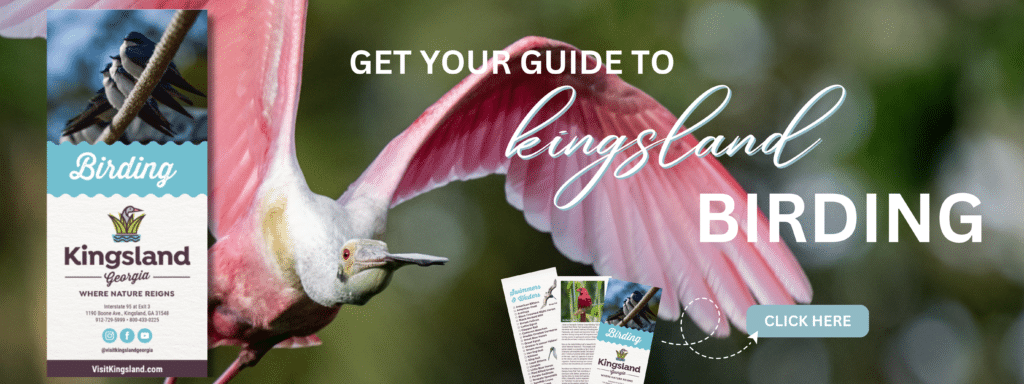Roseate Spoonbills bring splash of pink to Coastal Georgia
Coastal Georgian residents and visitors alike are often delighted to see a beautiful splash of pink when they capture a glimpse of the roseate spoonbill.
Through the spring and summer months, you can often see them on mud flats along marshy shorelines, sweeping their rounded bill back and forth under the shallow water to forage for food. When they find something edible, they will flip their heads upward to funnel the catch down, their red eyes glittering like rubies in the sun. The unique shape of their beaks gives the appearance of a perpetual smile.
Catch a glimpse!
You won’t find them on the beach, but rather in marshy areas where there are shallows for feeding. They are a bit more elusive than the great egret or white ibis.
Like Florida’s iconic flamingo, the roseate spoonbill was confined to Florida just a few decades ago. The first spoonbill nest in Georgia was documented in 2011 by Georgia Department of Natural Resources ornithologist Tim Keyes, who spotted one on the grounds of a former paper mill site near the St. Marys waterfront.
“Prior to this record, the furthest northern breeding record for roseate spoonbill was in St. Augustine, St. John’s County, Florida, approximately 100 kilometers to the south,” writes Keyes and his colleagues Jessica Aldridge and Chris Depkin in a scientific paper called “Roseate spoonbill breeding in Camden County: A first state nesting record for Georgia.”
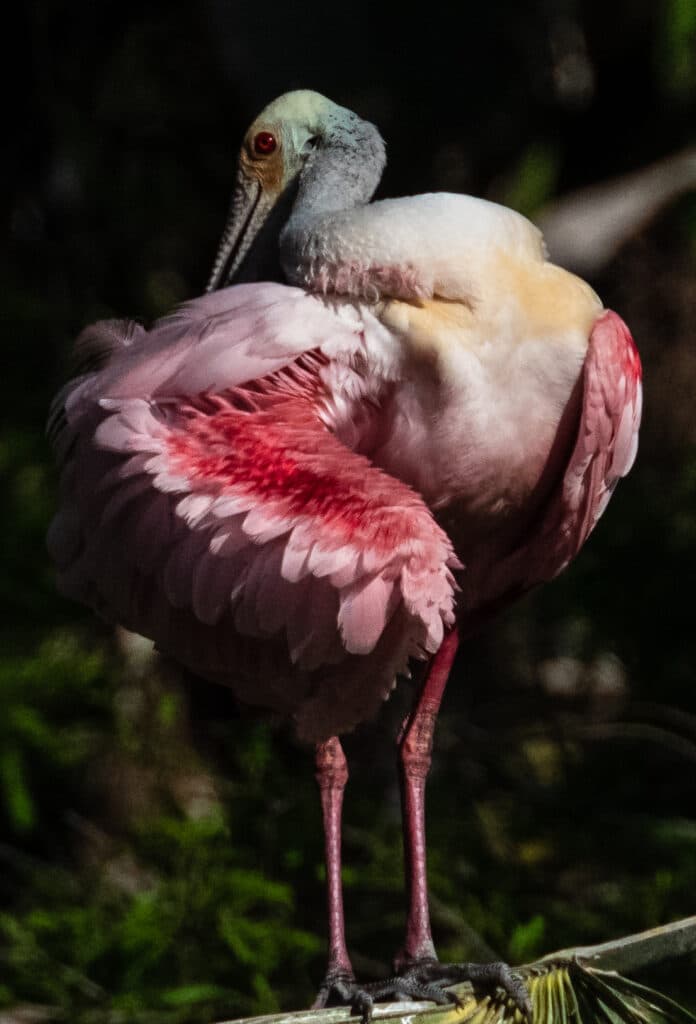
Roseate spoonbills are always eye-catching with their pink plumage, but breeding and nesting season brings out their deepest, most brilliant colors. There’s no wonder they captivate the attention of those who are fortunate to see them.
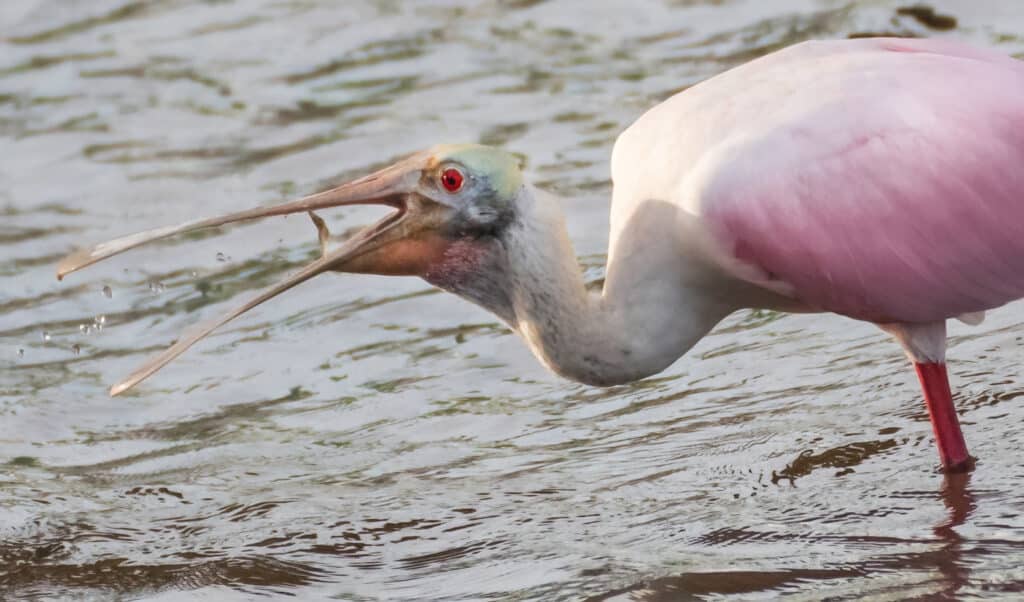
Caught one! This roseate spoonbill forages for food the St. Marys waterfront, sweeping his rounded bill from side to side to find something to eat. This species that finds its food through its sense of touch.
The prime location
While it was once rare to see one in coastal Georgia, you now can spot them all the way into South Carolina and beyond. Scientists suggest the northward push may be due to a rebound in the species within Florida, combined with changes to the hydrology of Florida Bay and other spoonbill habitat with the state.
Lucky for the spoonbills, fresh seafood is available all up and down the Atlantic coast. Roseate spoonbills typically eat crustaceans and small fish. The carotenoids in that marine life is believed to create the the birds’ signature rosy hue.
Juveniles are born with their heads covered with downy white feathers, but those feathers disappear with age to reveal a smooth yellowish green, adding to its unique appearance. Their feathers turn a darker pink with maturity and often include red markings on their wings, which get even more brilliant during breeding season.
A RESLIENT BREED
Like many colorful wading birds, roseate spoonbills were nearly hunted into extinction more than a century ago as they were sought after for women’s hats and other fashion accessories. The Migratory Bird Treaty Act of 1918 and other laws put into place since then, in both the U.S. and abroad, have successfully restored some of those numbers for many threatened bird species.
The loss of habitat, a plight facing many in the wading bird category, remains the greatest threat to the roseate spoonbill in Florida. Coastal Georgia lacks the density seen farther south. The Peach State’s network of rivers, streams and estuaries along the coast provide the perfect place for roseate spoonbills in search of new places to nest and feed.
To the delight of coastal birders, it looks like they are here to stay.
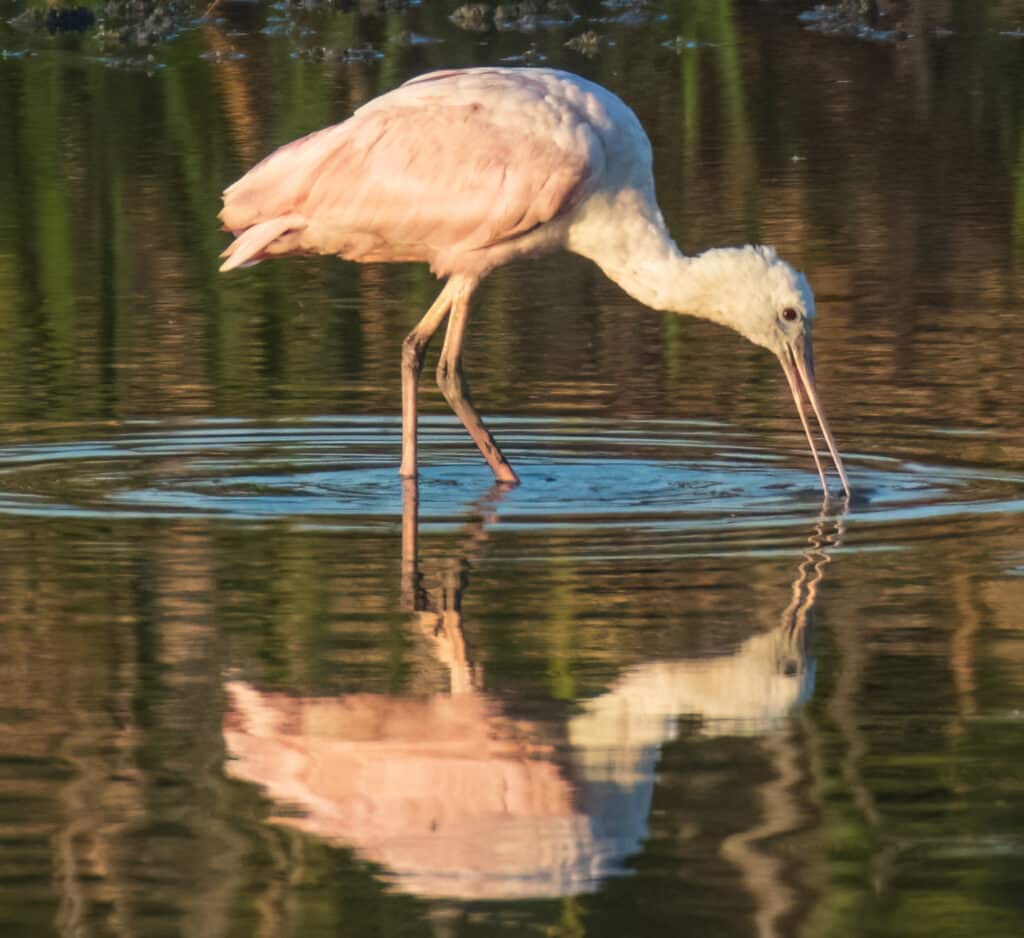
The roseate spoonbill is a favorite sighting among those who spend time in coastal Georgia, probably due to its fancy plumage and interesting feeding behaviors. Just a few decades ago, they were mostly confined to Florida, but are now nesting well into Georgia and beyond.
WHERE TO SEE THEM
Here are the best places to spot roseate spoonbills in Coastal Georgia:
Camden County: St. Marys waterfront, Crooked River State Park and Cumberland Island
Glynn County: Jekyll and St. Simons islands, Wolf Island National Wildlife Refuge.
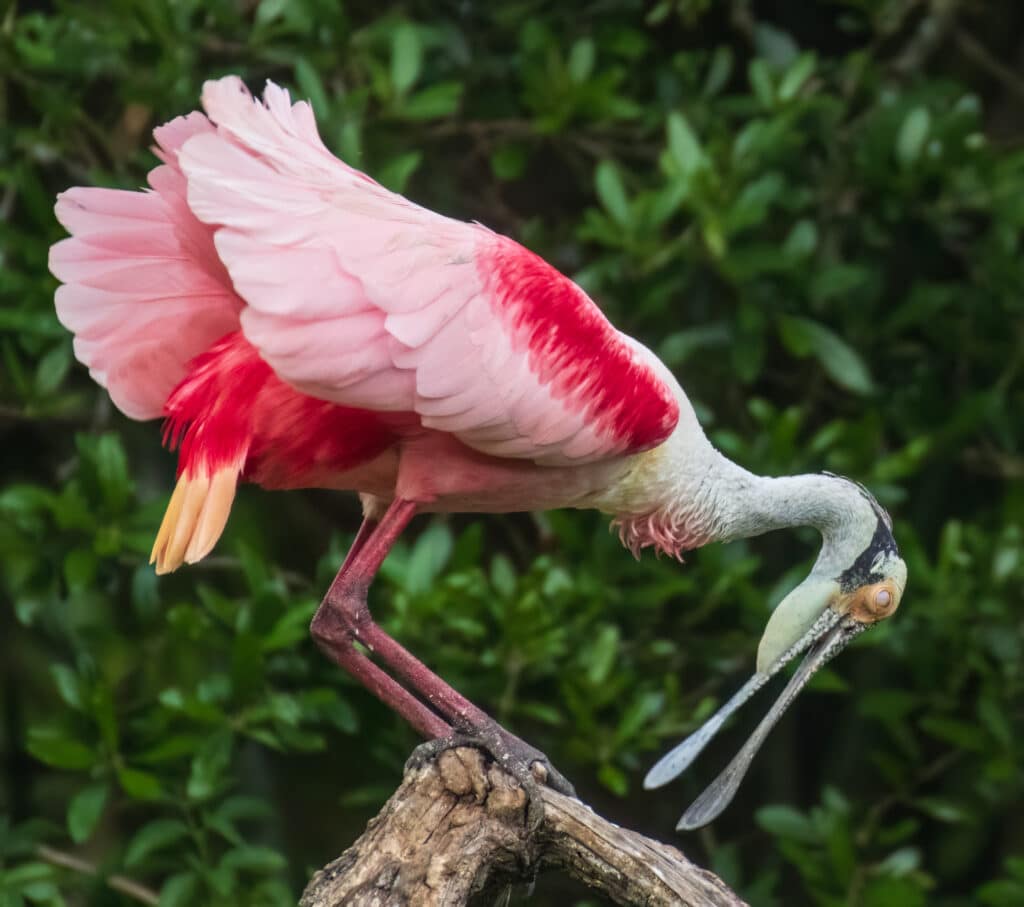
The roseate spoonbill, shown here with breeding plumage, looks even more unusual when you can see nictating membranes covering their eyes. This is a protective feature found in all bird species that still allows some vision.
Photos and article by Jill Helton


